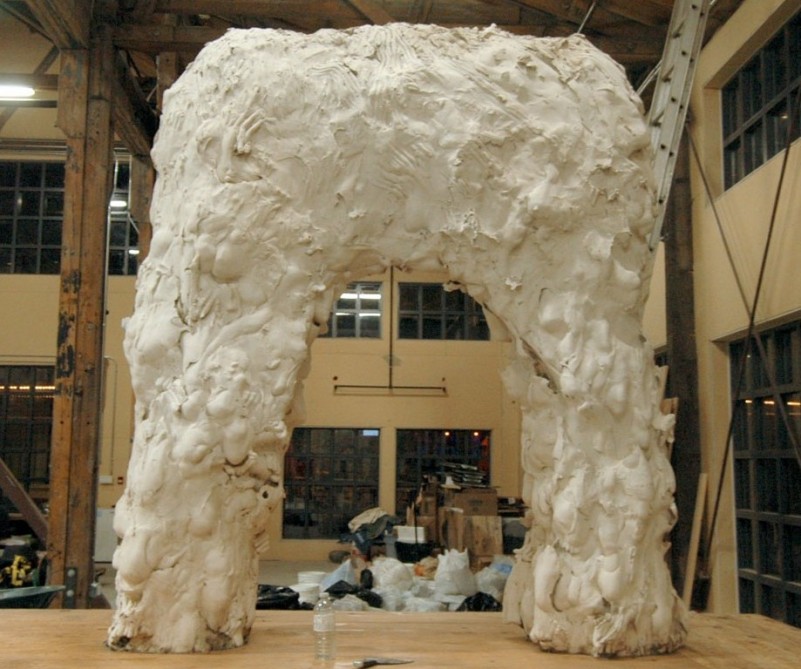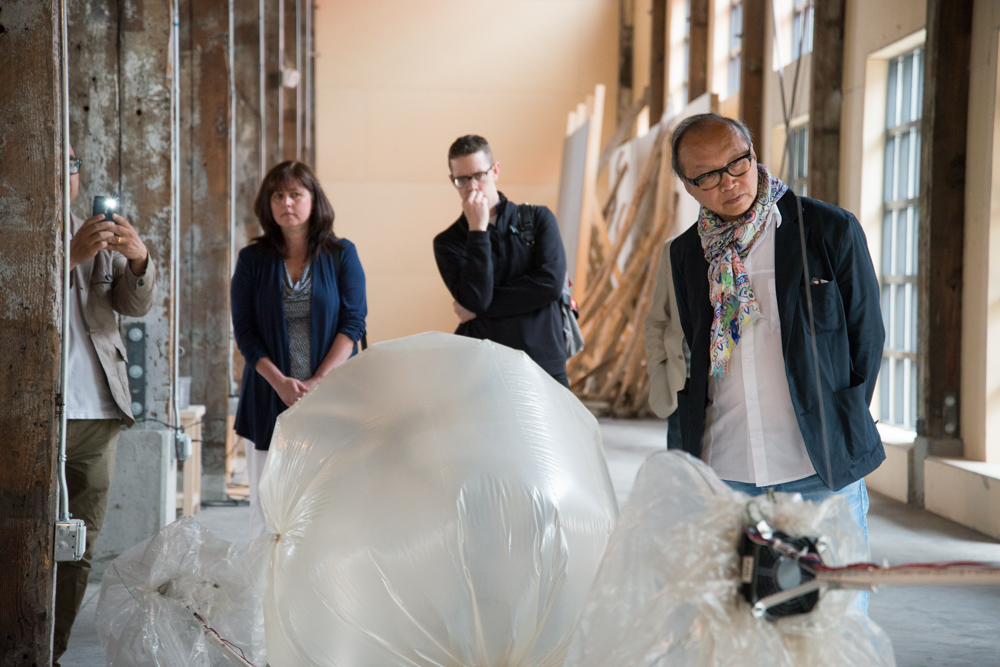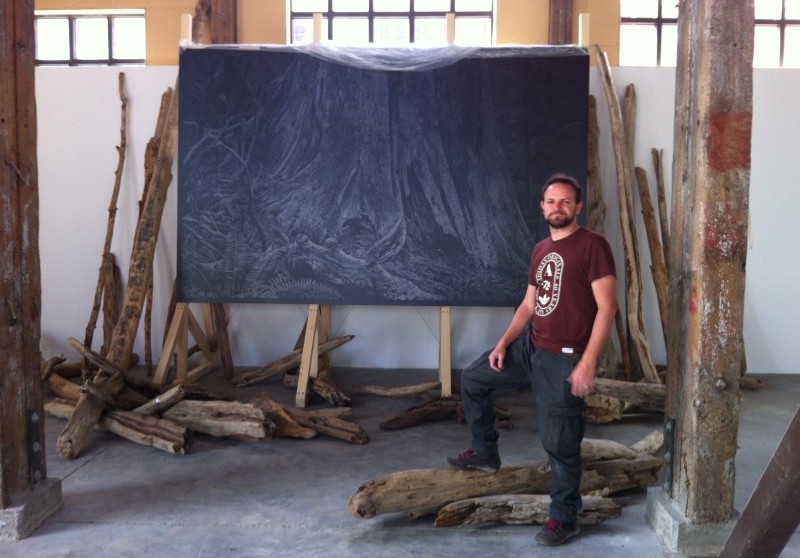Artwork Reflecting Tension in Canadian History
Social Studies - Grade 10
This inquiry challenge is intended to be used in connection with the full set of cross-curricular, multigrade inquiry challenges written for the entire Pavilion exhibition. The related unit plans are listed as “Related Material”. This unit of inquiry is not a recipe book but rather a launchpad to inspire new BIG IDEAS. We encourage you to use and/or modify one, or several of the BIG IDEAS below. Adapt it to the grade/ ability level of your students.
Enduring Understanding
Artwork has the power to reflect the stability and instability of culture, economy, government both past and present.
Guiding Questions for the entire Pavilion
In what ways can stigmatism be broken down and perception be changed about a nation? How would you describe the current state of affairs in Brazil? What are the collective voice of the Brazilian contemporary artists? How does the current state of affairs in Brazil relate to life in Vancouver, Canada and the world?
Guiding Questions for this installation (Red Fortune by Paulo Climachauska)
How does Climachauska’s installation reflect tension in Canadian history?
How does Climachauska’s installation reflect infinity? Why do yo think he chose this concept for his backdrop?
Mind Opening
Choose or devise practices to encourage students to be open to new experiences and ways of thinking in your classroom. For example, the MindUP in-school program.
Discovery and Inspiration
Launch the Project
• Introduce the Theme: Present the Enduring Understanding and Guiding Questions using vocabulary that is appropriate for your grade level.
• About Vancouver Biennale: Play a short video.
• Create Project Space: Brainstorm ideas to make the project theme visual and visible using bulletin boards, and/or a project corner to share relevant materials and inquiry questions and processes.
Reference Resources:
• Vancouver Biennale 2014-2016 Exhibition Theme: Open Borders / Crossroads Vancouver
• Biennale International Pavilion/Focus on Brazil: Information about the Pavilion
• Feature Art Installation and Artist: Red Fortune by Paulo Climachauska
• Related Unit Plans: Brazil’s Current State of Affairs, Rainfall in Vancouver & Sao Paul, Relating Art to the Human Body, Borrowing from Indigeneity: Totems, Relating Art to the Written Word
• Other Pavilion Brazilian Artists: Nathalia Garcia, Juliana Cerqueira Leite, Mariana Manhães, Marcelo Moscheta, Gisela Motta & Leandro Lima, Raul Mourão, Tulio Pinto, Studio in the City
Behind the Scene Making of the Pavilion Video
Learning to Learn
Art Inquiry
• Ask students to write in their journal and share how would they describe the culture of Brazil before visiting the Pavilion and indicate how did they form these impressions. After the visit, ask the students if their perceptions have changed and if so, in what ways.
• BIG IDEAS Anywhere educators: Experience the Pavilion anytime and its thought provoking Brazilian art here using a 3D Navigator/Viewer – you can walk around the space with your mouse and interact with the art as if you are there! For best virtual art inquiry experience, freely explore the entire Pavilion and locate Red Fortune (Paulo Climachauska) for further inquiry challenges. Interact and experience this installation from different angles using the 3D Navigator/Viewer. Also view the Pavilion Guided Tour Video segment about this artwork (from 3:28 to 4:07 min) MUTE ON.
• Use the Art Inquiry Worksheet (PDF) to guide and capture their ideas and impressions. Customize or create your own Art Inquiry Worksheet as appropriate for your project and class needs.
• Click the Box Below to begin your Pavilion Virtual Exploration via 3D Navigator/Viewer provided by Real Estate Channel (Contact: info@realestatechannel.ca)
Shared Insights
• Sharing Art Inquiry Experience: Ask students to share the Art Inquiry Worksheet responses in class.
• View Guided Tour Video: View the Pavilion Guided Tour Video introductory segment and segment about this artwork (from 0 to 1:15, 3:28 to 4:07 min) again with SOUND ON.
• Significant Aspects of the Artist’s Life & Work : Using the following information about Paulo Climachauska, teacher creates stations detailing the artist’s life and work. In small groups, students rotate through these stations. Topics might include: (1) education and training; (2) life’s work; (2) materials and processes; (3) beliefs and values. At each station, students answer questions and/or complete tasks. For example, at the station “life’s work” students might plot the artist’s various installations on a map of the world. Encourage students to draw a parallels to their own lives and reflect on the countries/cities/communities that they have lived in and the significance of these location to them.
Cross-Curricular Inquiry Challenges
Red Fortune (Paulo Climachauska) Inquiry Challenge
• Social Studies – The Last Spike of the CPR & The Ethical Dimension of Canadian History:
How does Climachauska’s installation reflect tension in Canadian history?
1/ Teacher introduces The Following Article to students that details how the photograph “The Last Spike” was chosen as one of ten images that “changed Canada” by Canada’s History magazine. 2/ Students Google Image “The Last Spike” and are asked to convey what images they see. 3/ Teacher introduces/reinforces the concept of Historical Evidence. 4/ Teacher provides small groups with a copy of The Last Spike Photographs Chart and assign either Photograph A (The Politicians Last Spike) or Photograph B (The Labourers Last Spike) to an equal number of groups. 5/ Source & Context: small group discussion and research using the Internet – When was this photo taken? Where was it taken? Who was the photographer? What was going on this this society at the ten this picture was taken that might help us interpret the photograph? From what we know about life at the time, how might someone back then have viewed the event? What things capture your attention in this photo? What does the clothing the people in the picture tell us about them? How has the photographer arranged the people in the picture? Why do you think this photograph was taken? 6/ Discuss their answers in relation to Photos A & B. 7/ Teachers introduces Photograph C (The Chinese Labourers & the CPR) and asks how many students found this image during their Google search. 8/ Students complete the Historical Thinking Evidence Worksheet for Photograph C and then answer the following questions: What is similar about these sources? What is different? Do these sources extend what I already know about the building of the CPR? 10/ Final Inquiry Questions: Why do we rarely see photograph C in depictions of the “Last Spike” instead of photographs A and B to represent the Last spike? Why were the Chinese left out of photograph A and B? What does this tell us about the time period? Should our current values and judgements be applied to past events?
• Mathematics/Language Arts – Infinity:
How does Climachauska’s installation reflect infinity? Why do yo think he chose this concept for his backdrop?
Invite students to consider the following two games:
Name the Biggest Integer – players take turns choosing integers (whole numbers); the winner is the person who names the largest number.
Closest to 0 – players take turns choosing rational numbers (which include both integers and fractions, like 3/4 and 7/8); the winner is the player who names the number closest to zero.
Ask students to articulate a winning strategy for each game, and to compare and contrast the two. It should be clear that the best strategy for both games is to go last. However, what happens if no one goes last? What if the game never stops and you pay infinitely? When comparing and contrasting the two games, discuss the role of infinity in each. In both games, the fact that the player going last can always win is a consequence of the infinitude of the sets of numbers. However, in each game, a different kind of infinity is used: in “Name the Biggest Integer,” we rely on the fact that we can choose numbers to be infinitely large; in “Closest to 0,” we rely on the fact that we can choose numbers to be infinitely small. Use these simple games and the ensuing discussions to get students thinking about the different kinds of infinity. Then have them read the related article to get them thinking deeper about this important concept.
Read the entire article “The Life of Pi, and Other Infinities.” Introduce students to the following words or concepts before reading: finitude, monolithic, implacable, doppelgänger and subjugate. Discussion/ reading comprehension questions: (1)What are some examples of infinite quantities given by the author; (2) How could one infinity be larger than another? What example does the author use?; (3) What does the mathematician Steven Strogatz mean when he says “infinity is your friend”? (4) What does the mathematician Ian Stewart mean when he says “You can’t be freewheeling in your use of infinity”? (5) What is a doppelgänger, and why does the existence of an infinite universe suggest yours might exist?
Websites:
Reflection
• Teacher and students can reflect on their entire learning process by revisiting the Enduring Understanding and Guiding Questions.
• How did the unit of study open inquiry, create cross–curricular learning opportunities and/or apply learning to real life situations? Has this unit of inquiry changed your opinions, values and world view? In what ways, if any, has it helped you grow as a learner?
Credits
Written by: Stephanie Anderson Redmond, B.A;. B. Ed.; M. Ed.; Ph.D. Student, Department of Curriculum and Pedagogy, UBC
©2014 Vancouver Biennale





